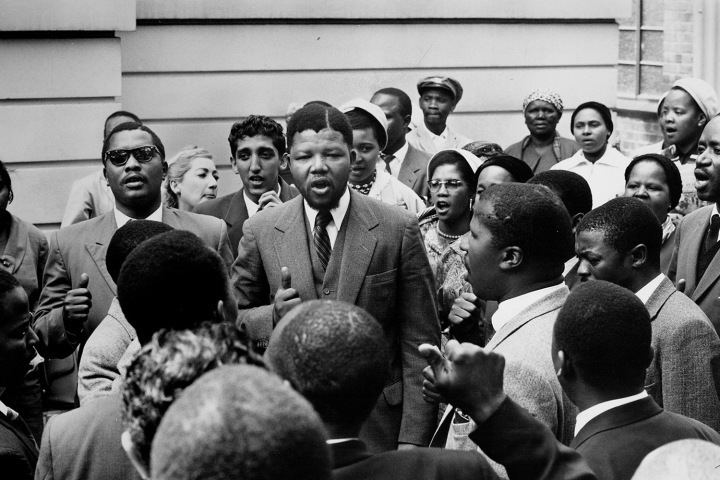 | ||
Nelson mandela the rivonia trial
The Rivonia Trial took place in South Africa between 1963 and 1964. The Rivonia Trial led to the imprisonment of Nelson Mandela and the others among the accused who were convicted on life sentences.
Contents
- Nelson mandela the rivonia trial
- Nelson mandela full speech at start rivonia trial 20 april 1964
- Origins
- Arrests
- List of defendants
- Defence lawyers
- Charges
- Escapes
- Mandelas speech
- Results
- References
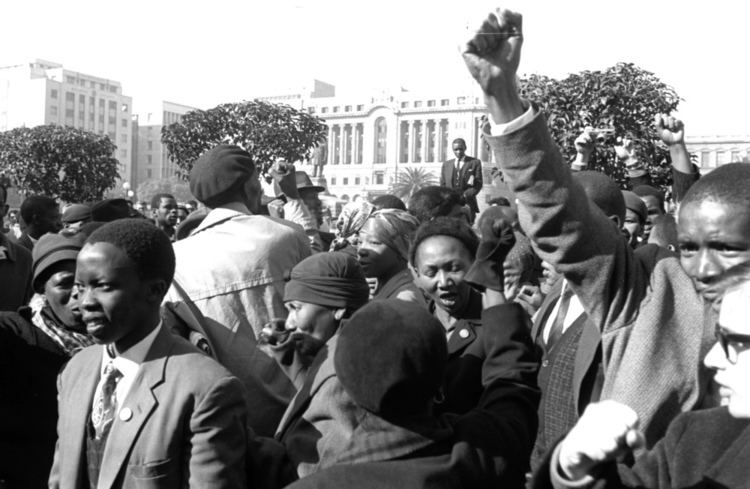
Nelson mandela full speech at start rivonia trial 20 april 1964
Origins
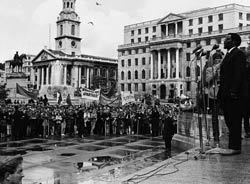
The Rivonia Trial was named after Rivonia, the suburb of Johannesburg where leaders had been arrested (and documents discovered) at Liliesleaf Farm, privately owned by Arthur Goldreich, on 11 July 1963. The farm had been used as a hideout for the African National Congress and others. Among others, Nelson Mandela had moved onto the farm in October 1961 and evaded security police while masquerading as a gardener and cook called David Motsamayi (meaning "the walker").
Arrests
Arrested were:
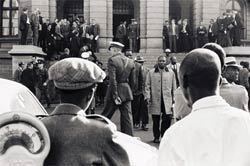
and others.
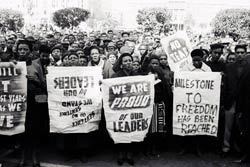
Goldberg, Bernstein, Wolpe, Kantor and Goldreich were Jewish South Africans; Hepple was an Englishman; Kathrada an Indian Muslim; Mandela, Mbeki and Mhlaba were Xhosa people; Motsoaledi and Mlangeni were Pedi people and Sisulu was Coloured (he had an English father and an Xhosa mother).
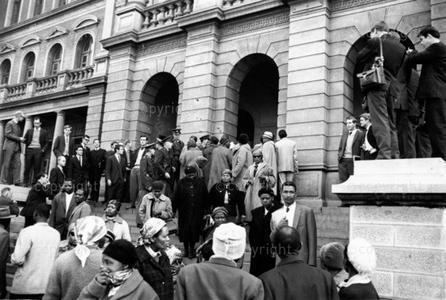
The leaders who were prosecuted in the Rivonia Trial also included Nelson Mandela, who was already in Johannesburg's Fort prison serving a five-year sentence for inciting workers to strike and leaving the country illegally. Most of the Rivonia defendants were to be convicted, and in turn sentenced to life imprisonment.
The government took advantage of legal provisions allowing for accused persons to be held for 90 days without trial, and the defendants were held incommunicado. Withstanding beatings and torture, Goldreich and Wolpe escaped from jail on 11 August. Their escape infuriated the prosecutors and police who considered Goldreich to be "the arch-conspirator".
The chief prosecutor was Dr. Percy Yutar, deputy attorney-general of the Transvaal.
The presiding judge was Dr. Quartus de Wet, judge-president of the Transvaal.
List of defendants
The first trial indictment document listed 11 names as the accused. The trial began in October 1963. Counsel for the accused successfully challenged the legal sufficiency of the document, with the result that Justice de Wet quashed it. Prior to dismissal of the first indictment, the State withdrew all charges against Bob Hepple, Hepple subsequently fled the country, without testifying, and stated "that he never had any intention of testifying". The second indictment thus only listed 10 out of the original 11 names, referring to them as Accused 1 through 10.
- Nelson Mandela
- Walter Sisulu
- Denis Goldberg
- Govan Mbeki
- Ahmed Kathrada
- Lionel "Rusty" Bernstein (acquitted)
- Raymond Mhlaba
- James Kantor (acquitted)
- Elias Motsoaledi
- Andrew Mlangeni
Defence lawyers
Nat Levy was attorney of record in Pretoria for Mandela and the other accused, with the exception of Kantor. Hilda Bernstein (wife of Rusty Bernstein) approached Joffe, after being rebuffed by other lawyers who claimed to be too busy or afraid to act for her husband. Joffe was subsequently also approached by Albertina Sisulu (wife of Walter Sisulu), Annie Goldberg (mother of Dennis Goldberg) and Winnie Mandela (wife of Nelson Mandela). Joffe agreed to act as attorney for all of the accused except Kantor, who would require separate counsel, and Bob Hepple.
Joffe initially secured the services of advocates Arthur Chaskalson and George Bizos, then persuaded Bram Fischer to act as lead counsel. Vernon Berrangé was also later recruited to join the team of advocates. The defence line-up for the majority of the accused was:
The accused all agreed that Kantor's defence could share nothing in common with the rest of the accused. He thus arranged a separate defence team. While Harold Hanson primarily represented Kantor, he was also invited to deliver the plea for mitigation for the other 9 accused. The defence line-up for Kantor was
Charges
Charges were:
"Production requirements" for munitions for a six-month period were sufficient, the prosecutor Percy Yutar said in his opening address, to blow up a city the size of Johannesburg.
Kantor was discharged at the end of the prosecution's case.
The trial was condemned by the United Nations Security Council and nations around the world, leading to international sanctions against the South African government in some cases.
Escapes
Mandela's speech
At the beginning of the defence's proceedings, Nelson Mandela gave a three-hour speech from the defendant's dock, in which he explained and defended the ANC's key political positions. He justified the movement's decision, in view of the increasing restrictions on permitted political activity on the part of non-White Africans, to go beyond its earlier use of constitutional methods and Gandhian non-violent opposition to the state, embracing a campaign of sabotage against property (designed to minimize risks of injury and death), while also starting to train a military wing for possible future use. He also discussed in some detail the relationship between the ANC and the SACP, explaining that, while the two shared a commitment to action against the apartheid system, he was wedded to a model of constitutional democracy for South Africa (he singled out the British political model for particular praise), and also supported a market economy rather than a communist economic model. The speech is considered one of the founding moments of South African democracy.
Mandela's closing words have been much-quoted. They were reportedly spoken looking the judge full in the eyes. His statement that he was prepared to die for the cause was strongly resisted by his lawyers, who feared it might itself provoke a death sentence. In a concession to their concerns, Mandela inserted the words "if it needs be". Nelson Mandela, speaking in the dock of the court on 20 April 1964, said:
Results
Although the prosecution did not formally request the death penalty, close observers of the trial considered such a sentence to be implicit in the prosecutor's presentation of his case. Opposition to the death penalty included both public campaigns internationally and the defence's arguments within the courtroom. Harold Hanson was called upon to argue in mitigation. He compared the African struggle for rights to the earlier Afrikaans struggle, citing precedents for temperate sentencing, even in cases of treason. Eight defendants were sentenced to life imprisonment; Lionel Bernstein was acquitted.
There was no surprise in the fact that Mandela, Sisulu, Mbeki, Motsoaledi, Mlangeni, and Goldberg were found guilty on all four counts. The defence had hoped that Mhlaba, Kathrada, and Bernstein might escape conviction because of the skimpiness of evidence that they were parties to the conspiracy, although undoubtedly they could be prosecuted on other charges. But Mhlaba too was found guilty on all counts, and Kathrada, on one charge of conspiracy. Bernstein, however, was found not guilty. He was rearrested, released on bail, and placed under house arrest. Later he fled the country.Denis Goldberg went to Pretoria Central Prison instead of Robben Island (at that time the only security wing for white political prisoners in South Africa), where he served 22 years.
Nelson Mandela spent 27 years and eight months in prison as a result of the Rivonia trial (18 years of which were spent on Robben Island). He was released on 11 February 1990 by President F. W. de Klerk.
